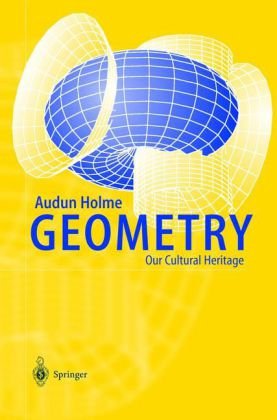Product desciption
Geometry Our Cultural Heritage 1st Edition Audun Holme by Audun Holme 9783540419495, 3540419497 instant download after payment.
Noticeable weaknesses are the typos and lapses in grammar on virtually every page. Otherwise the history and current state of geometry are nicely presented, and my objections are again to failings I find to pervade recent geometry and mathematics in general. I will focus here on the author's discussion of foundations of mathematics (pp.170-176) preceding his more detailed presentations. He speaks characteristically of a high level of precision in present-day logic and set theory, yet I see numerous misconceptions. He describes logic in terms of "boolean functions", by which a statement P is either true or false, and "No other alternatives exist". This has been contested since Aristotle. A familiar counterexample is in asking "Did the husband stop or not stop beating his wife?" about a husband who never beat her. The concerned Law of Excluded Middle is accordingly restricted. The author in that vein also assigns to a statement P customary "truth-values", T and F, applied in "truth tables" for composite statements like "P implies Q". Briefly, that statement is held, e.g., true if P is false and Q is true. Beside this conflict with the common understanding of implication, also phrased as "if P then Q", the example conflictingly supposes P true in the implication and false in the truth-value. One other failing I might consider in that part of the book is the misunderstanding (by Russell also) and consequent widespread influence of "Russell's paradox". It posits THE SET OF ALL SETS NOT MEMBERS OF THEMSELVES. For instance, the set of all chairs (not itself a chair) qualifies, but not the set of all non-chairs. It is then observed that if the posited set is a member of itself then, since not in the set, it is contradictorily not a member of itself, and if it is not then, since it qualifies, it is. A like paradox has been noted in considering A MAN WHO AS BARBER IN A VILLAGE SHAVES ALL MEN IN IT NOT SHAVING THEMSELVES. It has been tried to dismiss this, in efforts to view the paradox as a problem in set theory. But the problem is merely an unrelated apparent contradiction. If the barber shaves ALL those not shaving themselves, he cannot be among them, since he would contradictorily shave himself. And if he shaves ONLY those not shaving themselves, he must be among them, since he would otherwise again contradictorily shave himself. Hence he cannot both shave all and only those in question, but either the first or the second. Likewise, the concerned set cannot include both all and only those in question, but either one or the other.


